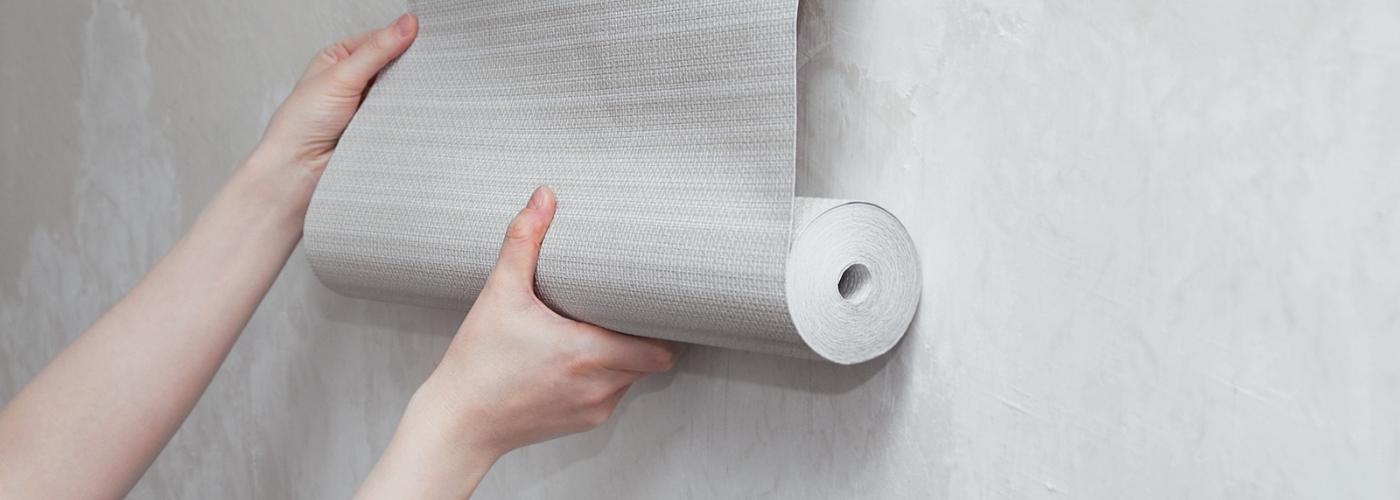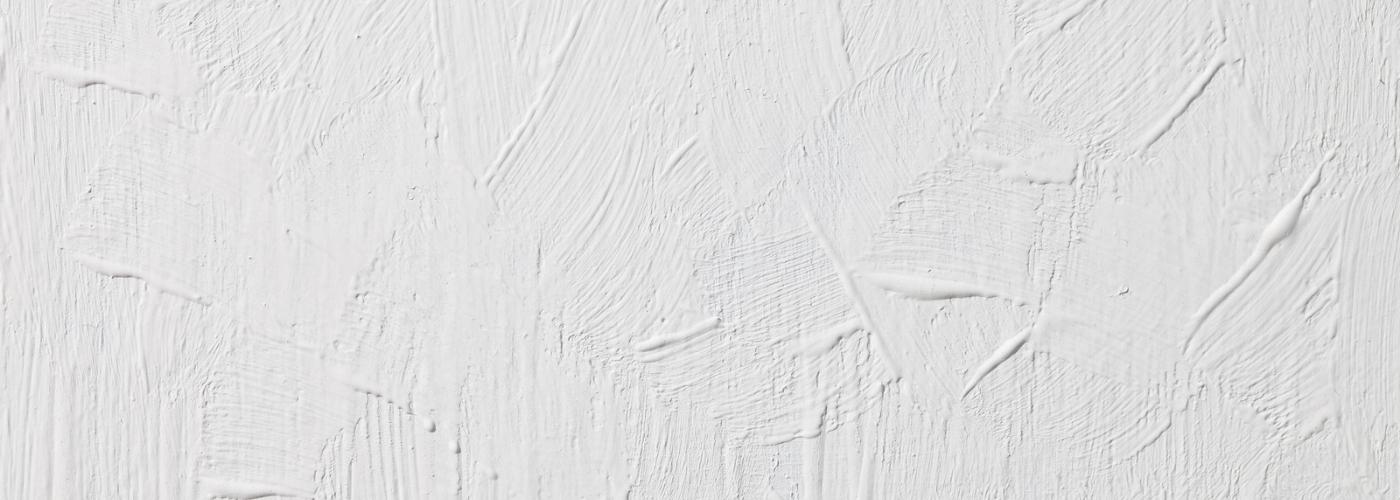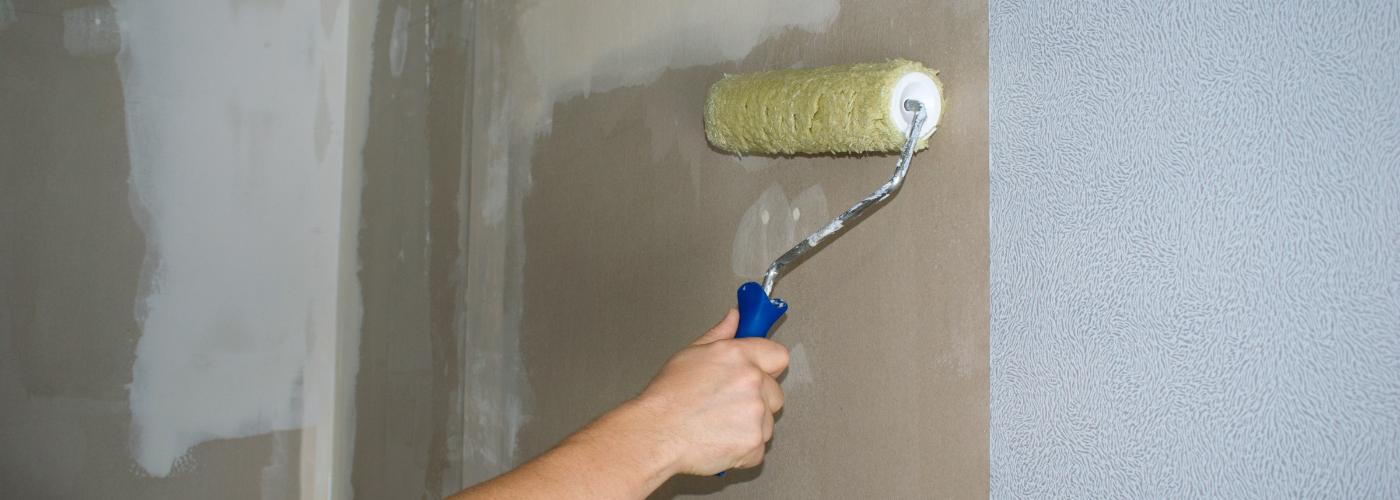Wallpaper is a great way to add personality and style to any room in your home. Whether you’re looking to create a bold accented wall or bring subtle texture to a living space, wallpaper can instantly transform your walls. We’ll be reviewing some general guidelines in this guide to wallpaper installation.
What Is Wallpaper?

When it comes to home decor in San Diego, wallpaper installation is one of the most popular and versatile options available. But what exactly is wallpaper?
At its core, wallpaper is a type of material that can be applied to walls as a decorative covering. It’s typically made from paper or vinyl and comes in a wide variety of styles, patterns, and colors.
While wallpapers have been around for centuries, they gained popularity during the 18th century in Europe as a more affordable alternative to tapestries. Today, wallpapers are available in traditional designs like floral prints and damasks but also come in modern patterns such as geometric shapes and abstract art.
They can add texture, depth, personality, style, and a story to any room in your home.
Wallpaper installation has come a long way since its inception. Today’s wallpapers are easier to install thanks to advancements in adhesive technology that allows them to be easily removed without damaging the walls underneath.
Can You Install Wallpaper On A Textured Wall

Many homeowners love the idea of having wallpaper in their homes. Wallpaper can add texture, color, and pattern to a room that paint just can’t match. But what about when your walls are textured?
Can you still install wallpaper? The answer is yes, but there are some things to consider before you dive in.
Firstly, it’s important to understand the type of texture on your walls. If it’s a light texture such as orange peel or knockdown, then wallpaper installation shouldn’t be a problem.
However, if the walls have a heavy texture, such as popcorn or stucco, it’s best to avoid using wallpaper altogether as it will not adhere properly.
It’s also important to properly prepare the wall surface before installing wallpaper. Start by cleaning the walls thoroughly and filling any cracks or holes with spackle. Sand down any bumps or high spots so that the surface is even.
Keep these guidelines in mind during the material selection process. The last thing you want is to not be able to install your beautiful wallpaper because of a heavily textured wall.
What Do You Put On Walls Before Wallpapering?

Before wallpapering, it is important to prepare the walls properly. This includes filling any holes or cracks with spackle and sanding them smooth. If there are any stubborn stains on the wall, using a stain-blocking primer before applying wallpaper is recommended.
Once the wall is clean and smooth, it is time to apply a wallpaper primer. This helps the wallpaper adhere to the wall better and prevents any damage from occurring when removing the wallpaper in the future.
A good quality primer will also help ensure that your wallpaper stays looking fresh for longer.
In addition to a primer, some home remodeling service professionals recommend using lining paper before applying wallpaper. Lining paper can even out uneven walls, cover up imperfections, and give you a smoother surface for your chosen design.
Applying lining paper can be time-consuming, but it’s worth doing if you want a professional finish that lasts longer than without one.
How Long Do You Leave Paste On Wallpaper Before Hanging?
When it comes to wallpaper, one of the most common questions people ask is how long they should leave the paste on the wallpaper before hanging it. The answer depends on various factors, including the type of wallpaper you use and your area’s climate conditions.
Firstly, it’s important to note that different types of wallpaper require different amounts of time for the paste to set. For example, vinyl wallpapers require less paste and will set faster than non-woven wallpapers.
Secondly, if you live in an area with high humidity levels or it is raining outside when you are hanging your wallpaper, you may need to allow extra drying time. This is because moisture can slow down the setting process of the paste. Always see the instructions on the wallpaper or paste before applying it to your walls.
It’s best to add a generous amount of past throughout the wall so that the wallpaper gets an even application. Always read the instructions before applying the paste!

Less Is More: Using Minimalist Home Staging to Reach a Wider Audience
Staging a home for sale can help move your home quicker, and for a higher
Feb
How to Stage Your Bathroom to Add Appeal
Home staging is a great way to incorporate an added sense of luxury and increase
Jan
Preparing Your San Diego Home For A Room Addition
Adding a room to your San Diego home is an exciting project that can drastically
Apr